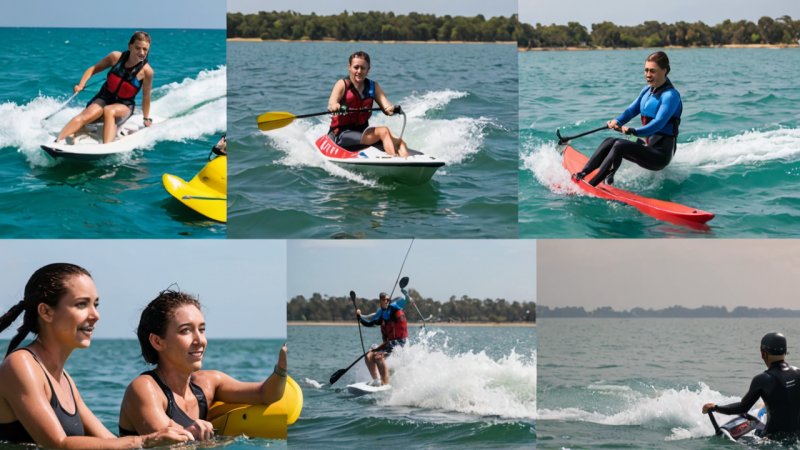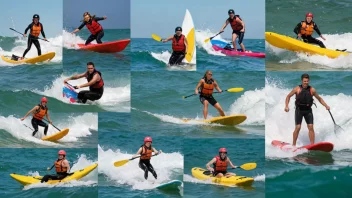As the sun peeks through the clouds and the water sparkles invitingly, many enthusiasts gear up for a thrilling day on the water. However, engaging in water sports comes with its own set of risks, particularly when unpredictable weather conditions can turn a fun outing into a dangerous situation. As technology continues to evolve, weather apps have emerged as essential tools for planning safe water sports outings. By providing real-time data and forecasts, these applications empower athletes to make informed decisions, ensuring both enjoyment and safety. This article explores the vital role of weather apps in water sports, their features, and how they contribute to safer outdoor experiences.
Understanding Weather Apps
Weather apps are digital tools designed to deliver up-to-date weather information, forecasts, and alerts. They harness data from various sources, including satellites, weather stations, and meteorological models, to provide users with accurate readings tailored to their location. For water sports enthusiasts, these applications can be lifesavers, offering insights into temperature, wind speed, precipitation, and potential storms.
The Importance of Accurate Weather Forecasting
Engaging in water sports such as kayaking, sailing, or wakeboarding requires an understanding of the weather conditions. Wind patterns, tides, and sudden changes in temperature can significantly impact performance and safety. Accurate weather forecasting is critical because it helps athletes avoid hazardous situations. For instance, strong winds can create dangerous waves for surfers, while sudden rain can lead to decreased visibility for sailors.
Key Features of Weather Apps for Water Sports
When selecting a weather app, it's essential to choose one that caters specifically to outdoor and water-related activities. Here are some key features to consider:
- Real-time Updates: The ability to receive live updates allows athletes to stay informed about changing conditions.
- Local Alerts: Many apps provide push notifications for severe weather warnings in the user's area, which can be crucial for safety.
- Wind and Wave Forecasts: Detailed information on wind speed and direction, along with wave height predictions, can help athletes plan their activities more effectively.
- Radar Maps: Visual representations of weather patterns can help users quickly assess approaching storms or rain.
- Tide Schedules: For activities like surfing or fishing, knowing tide schedules can greatly enhance the experience and safety.
How to Use Weather Apps Effectively
To maximize the benefits of weather apps, it's crucial to use them effectively. Here are some tips for water sports participants:
- Check Before You Go: Always consult the app before heading out. Look for the latest updates and forecasts to ensure conditions are safe.
- Monitor Conditions: Keep the app open while on the water to receive real-time updates and alerts. This can help you adjust your plans if conditions change.
- Plan for Contingencies: Prepare for unexpected weather changes by having a backup plan. Know safe areas to retreat to in case of storms.
- Join Community Forums: Many weather apps have community features where users share their experiences and tips. Engage with others to gain insights about local conditions.
Case Studies: Successful Use of Weather Apps in Water Sports
Several anecdotal accounts highlight the importance of weather apps in ensuring safe water sports experiences. For instance, a group of kayakers planned a trip on a river but consulted their weather app before departure. The app indicated a sudden storm approaching, prompting them to delay their outing. This decision likely saved them from dangerous conditions.
Similarly, a sailing team used their weather app to track wind patterns during a regatta. By continually monitoring the app, they adjusted their course and sails accordingly, ultimately leading them to a successful race while avoiding potential hazards.
The Future of Weather Apps in Water Sports
As technology advances, the potential for weather apps in enhancing safety and performance in water sports continues to grow. Future developments may include:
- AI Integration: Artificial intelligence could enhance predictive models, offering even more accurate forecasts tailored to specific activities.
- Augmented Reality: AR features might provide real-time overlays of weather data on live video feeds, giving users an immersive view of conditions.
- Community Collaboration: Increased connectivity among users can lead to better sharing of information and experiences, fostering a safer community.
Conclusion
In conclusion, weather apps play a crucial role in planning safe water sports outings. By providing accurate forecasts, real-time updates, and essential features tailored to outdoor activities, these applications empower enthusiasts to make informed decisions, ultimately enhancing their safety and enjoyment. As technology continues to evolve, the potential for these tools to improve the water sports experience is limitless. Whether you are a seasoned athlete or a beginner, leveraging the capabilities of weather apps can transform your approach to water sports, allowing you to embrace the excitement of adventure while prioritizing safety.






